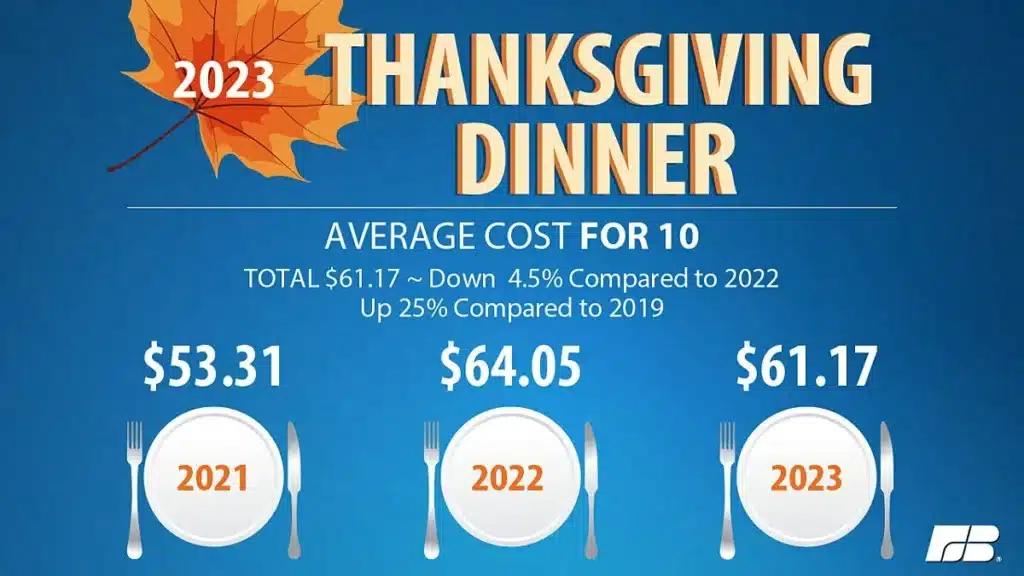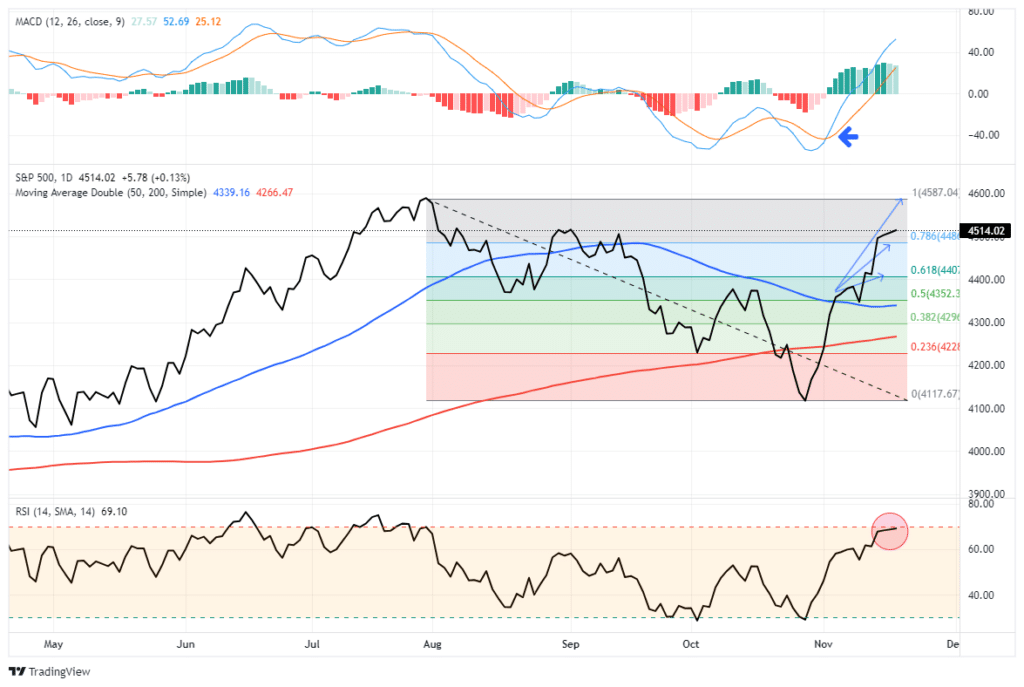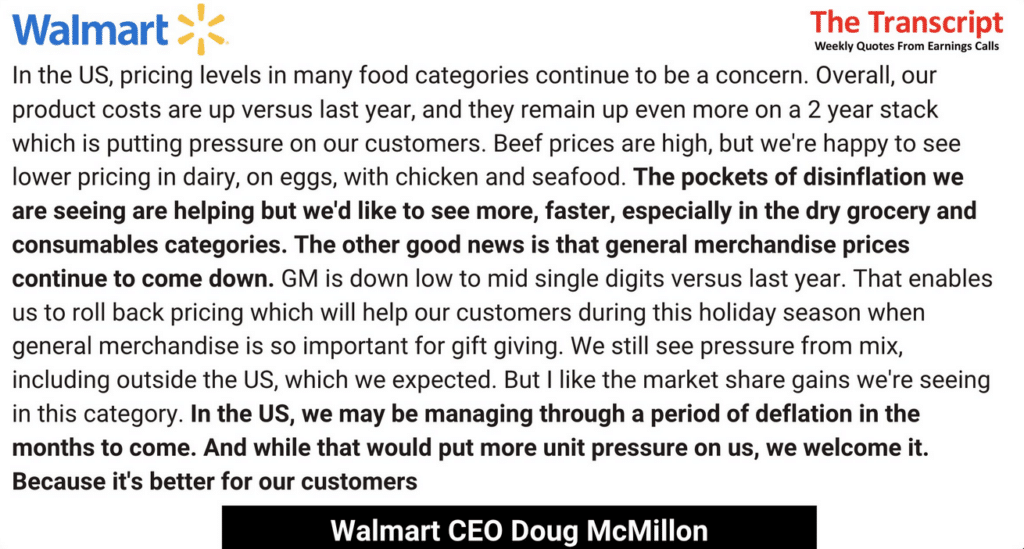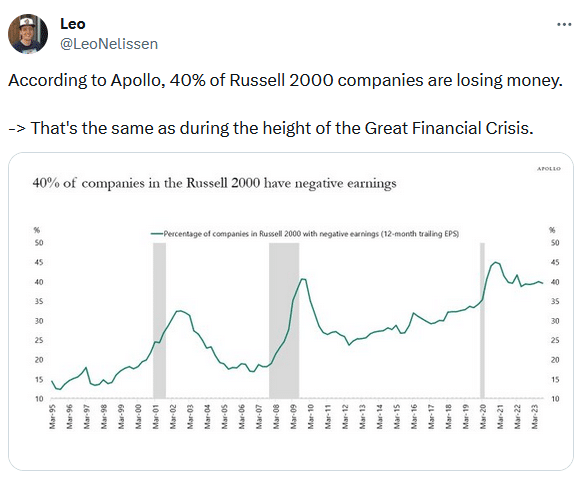According to a recent article by the American Farm Bureau (AFB), Thanksgiving dinner will be cheaper this year than last year. That said, prices for the turkey and traditional Thanksgiving dinner side dishes are still up over 20% from pre-pandemic levels. The turkey accounts for 45% of the price of the dinner at an average cost of $27.35. That’s down 5.6% from last year. Last year, turkey prices were elevated as the supply was reduced due to the avian flu. Not all goods fell in price. Per the report, pumpkin pie mix and dinner rolls are higher by 3.8% and 3.0%, respectively. However, whipping cream is down over 20%, and fresh cranberries are down 18%. Prices vary by region. Per the report, Thanksgiving dinner in the northeast is the highest in the country at $64.38. The Midwest and the South have the lowest costs, with both around $59.00.
From a bigger picture, the cost of Thanksgiving dinner tells us a lot about the insidious nature of the recent spate of high inflation. The Fed aims to get the annual inflation rate back to 2%. If the inflation rate dips moderately below the Fed’s target, the odds start to greatly favor the Fed will do everything in its power to generate more inflation. Therefore, while prices have stopped rising at near double-digit rates, it is extremely unlikely we will revisit the general price levels of 2019.

What To Watch Today
Earnings

Economy
- No economic releases of consequence
Market Trading Update
Last week, we discussed the decline in interest rates as recession fears resurfaced. As we noted then:
“The market pullback on Thursday was well-needed after the longest ‘win streak’ for stocks since 2021. After regaining the 200-DMA, the market surged through the 20- and 50-DMA. As we have discussed, pullbacks to support will be buying opportunities. Such was the case on Friday, as the test of the 50-DMA brought buyers into the market and rallied stocks sharply.”
Market rallies are common heading into year-end, and this rally is no different. However, we are now reaching more extreme levels of typical reflexive rallies, and a consolidation or correction to support should be expected. As we noted previously:
“We pushed through the 50% retracement level, which is also the 50-DMA. As noted above, that clears the way for a rally higher with a more bullish tone. That now sets the next targets at the 61.8% and 78.6% levels, then this year’s highs.”
We are currently wrestling with the 78.6% retracement level, which is also resistance from the September highs. Given the more overbought conditions, it is not surprising the market has had trouble advancing over the last several days. Given we are entering a holiday-shortened week, trading volume will be light, and volatility will likely pick up. If the market does provide a correction next week, supports will be the previous 61.8% and 50% retracement levels, respectively.

Continue following the basic investment rules and take advantage of tax loss selling as needed.
- Tighten up stop-loss levels to current support levels for each position.
- Hedge portfolios against more significant market declines.
- Take profits in positions that have been big winners.
- Sell laggards and losers.
- Raise cash and rebalance portfolios to target weightings.
From a portfolio management perspective, we have to trade the market we have rather than the one we think should be. This can make the challenge of battling emotions difficult from week to week. However, the rally we expected has arrived, providing a better risk/reward opportunity to rebalance equity exposure.

The Week Ahead
Other than the FOMC minutes from their prior meeting on Tuesday, this will be a quiet week on the news front. As discussed in yesterday’s Commentary, jobless and continued jobless claims will likely become more followed. They are robust leading indicators of the labor market. After a plethora of Fed speakers last week, we expect a limited number of Fed speeches this week.
The stock market is closed for Thanksgiving and will close at 1 pm ET on Friday.
Fed’s Esther George Worries About The Lag Effect
In a recent interview with MNI, Kansas City Fed President Esther George discusses the lag effect and how it plays into her thinking on Fed policy. Her views help us appreciate the difficulty the Fed faces in fighting inflation with higher rates versus the effect higher rates have on the banking sector. She harkens back to 2005-2008.
The last tightening cycle going back to 2005, we didn’t see much going on for a couple of years until that caught up and really hit the economy hard. It’s one of the reasons I’ve tolerated this idea that lags could still be working their way through.
As she notes, it took three years from the first rate hike for the cumulative effect of 5% in interest hikes to crush the banking sector. While she might want to raise rates more today, she fears the lag effect can snowball quickly as it did in 2008. She warns:
I think banks are only one shock away from having some problems.
The graph below shows the Fed hiked rates steadily for two years. It then paused for an entire year. The 2008 financial crisis didn’t become evident to the Fed until March 2008. Currently, the Fed has raised rates for about a year and a half, also by about 5%. As the Fed contemplates pausing or raising rates further, George worries about what may lie on the other side of their actions.

Walmart Warns of Deflation
The quote below from Walmart CEO Doug McMillion discusses the prospect of a period of deflation at Walmart. Other retailers have mentioned less inflation, but Walmart is the first to mention falling prices.

Tweet of the Day

Please subscribe to the daily commentary to receive these updates every morning before the opening bell.
If you found this blog useful, please send it to someone else, share it on social media, or contact us to set up a meeting.
Also Read

















